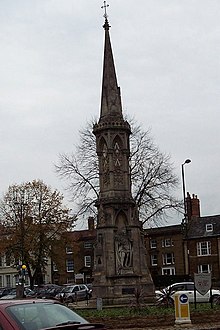
Henry Thomas Hare (1860–1921) was an English architect who was born in Scarborough, Yorkshire and educated in Sheffield and Harrogate. At the age of 16 he was articled to the Scarborough architect C A Bury but left after four years to complete his studies at the Atelier Ginain in Paris. He returned to London in 1878 to work as an assistant to the London architects King + Hill, and in 1886 passed the associateship examination for entry to the Royal Institute of British Architects, (RIBA) receiving the Asphitel Prize for passing with the highest marks.

Sir Arthur William Blomfield was an English architect. He became president of the Architectural Association in 1861; a Fellow of the Royal Institute of British Architects in 1867 and vice-president of the RIBA in 1886. He was educated at Trinity College, Cambridge, where he read Architecture.
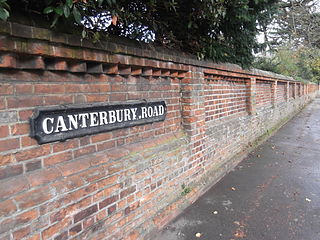
Canterbury Road is a road in North Oxford, England. It runs between Woodstock Road to the west and Banbury Road to the east. Winchester Road leads south from halfway along Canterbury Road, linking with Bevington Road that runs parallel to the south. Also to the south are North Parade and Church Walk.

Norham Gardens is a residential road in central North Oxford, England. It adjoins the north end of Parks Road near the junction with Banbury Road, directly opposite St Anne's College. From here it skirts the north side of the Oxford University Parks, ending up at Lady Margaret Hall, a college of Oxford University that was formerly for women only, backing onto the River Cherwell. Public access to the Parks is available from the two ends of the road. To the north of the road are Bradmore Road near the western end and Fyfield Road near the eastern end.

The Norham Manor estate is a residential suburb in Oxford, England. It is part of central North Oxford. To the north is Park Town with its crescents, to the east is the River Cherwell, to the south are the University Parks and to the west is Walton Manor, on the other side of Banbury Road.
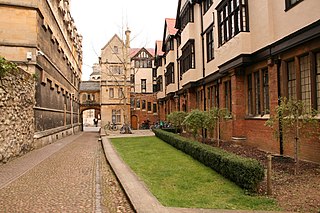
Harry Wilkinson Moore, FRIBA (1850–1915) was a Victorian and Edwardian architect. He was the son of Arthur Moore (1814–1873) and Mary Wilkinson (1821–1904), and a nephew of the architects George Wilkinson and William Wilkinson.

Great Rollright is a village in the civil parish of Rollright, about 2.5 miles (4 km) north of Chipping Norton, Oxfordshire.

John Chessell Buckler was a British architect, the eldest son of the architect John Buckler. J. C. Buckler initially worked with his father before taking over his practice. His work included restorations of country houses and at the University of Oxford.
Henry Jones Underwood (1804–1852) was an English architect who spent most of his career in Oxford. He was the brother of the architects Charles Underwood and George Allen Underwood.
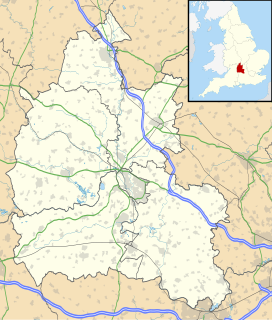
Burdrop is a village in Sibford Gower civil parish, about 6.5 miles (10.5 km) west of Banbury in Oxfordshire, England. Burdrop is contiguous with Sibford Gower and sometimes considered part of the village.

Charles Buckeridge was a British Gothic Revival architect who trained as a pupil of Sir George Gilbert Scott. He practised in Oxford 1856–68 and in London from 1869. He was made an Associate of the Royal Institute of British Architects in 1861.

Holwell is a village and civil parish about 2 miles (3 km) south of Burford in West Oxfordshire. The 2001 Census recorded the parish's population as 17.
Edward George Bruton was a British Gothic Revival architect who practised in Oxford. He was made an Associate of the Royal Institute of British Architects (RIBA) in 1855 and a Fellow of the RIBA in 1861.
Joseph Clarke was a British Gothic Revival architect who practised in London, England.

William Wilkinson (1819–1901) was a British Gothic Revival architect who practised in Oxford, England.
Alfred Mardon Mowbray (1849–1915) was an English Gothic Revival architect who practiced in Oxford and Eastbourne from the 1860s to the 1900s.

John Billing, FRIBA was an architect from Reading, Berkshire. His grandfather Richard Billing, father Richard Billing (1784–1853), brothers Richard (1814–84) and Arthur (1824–96) and nephew Arthur Ernest were also architects.
Walter Edward Mills was an English architect.
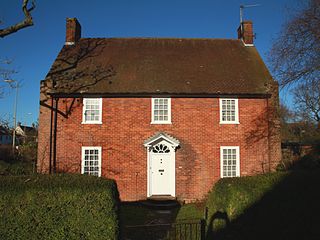
Thomas Lawrence Dale, FRIBA, FSA was an English architect. Until the First World War he concentrated on designing houses for private clients. From the 1930s Dale was the Oxford Diocesan Surveyor and was most noted for designing, restoring, and furnishing Church of England parish churches.
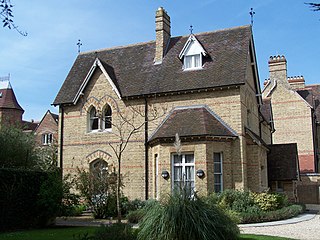
Frederick Codd was a British Gothic Revival architect and speculative builder who designed and built many Victorian houses in North Oxford, England.
